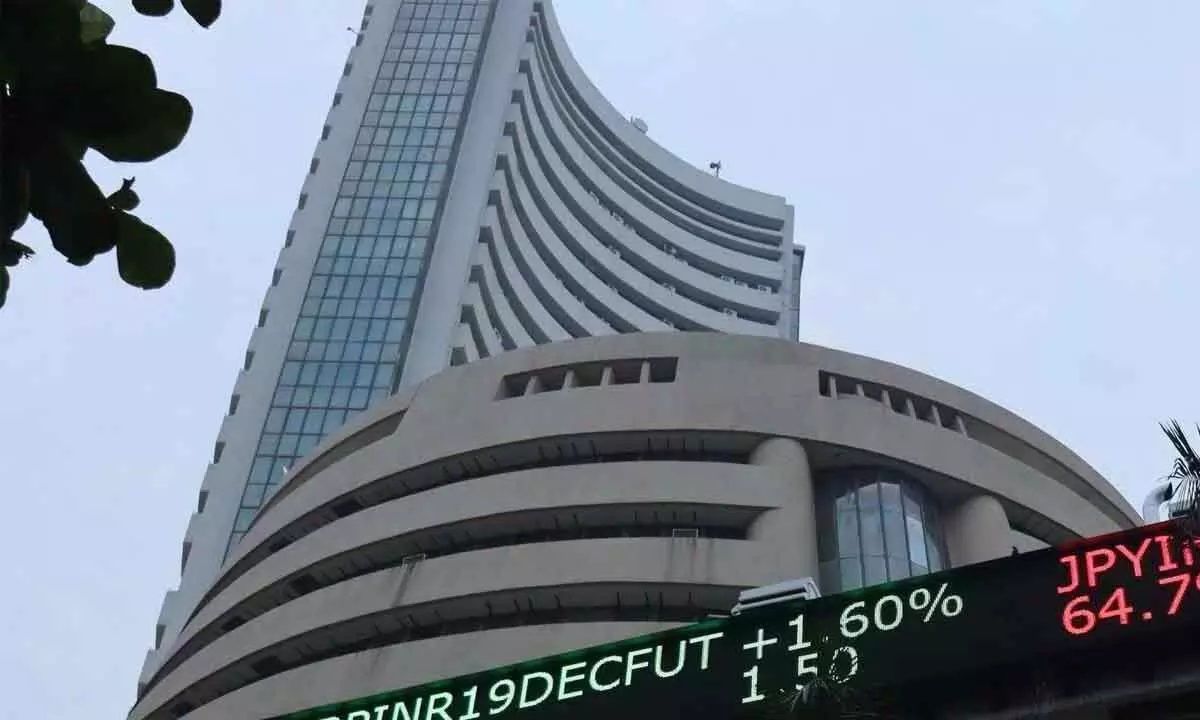Stock-specific trading more likely
The 11-day rally is impulsive in nature and looks overstretched. The higher degree rally is generally not sustained for a longer period
image for illustrative purpose

The domestic equity markets rallied for the third straight week. The benchmark index Nifty gained 372.40 points or 1.88 per cent. The BSE Sensex also gained by 1.86 per cent. The broader market indices cooled off this week. The Nifty Midcap-100 and Smallcap-100 indices are down marginally by 0.36 per cent and 0.14 per cent, respectively. On the sectoral front, the PSU Bank index is the top gainer with 7.22 per cent, followed by the Nifty IT index with 2.9 per cent. The Nifty Media index is the top loser with 3.63 per cent, followed by the Realty index with 0.75 per cent. The FIIs sold Rs9,580.09 crore, and the DIIs bought Rs10,230.43 worth of equities so far this month.
The Nifty has erased five weeks of losses in just three weeks, which is just 60 per cent of the time (near Fibonacci number 6.18%). The price pattern looks like an 8-week cup pattern breakout. The previous week’s Bull Flag pattern breakout has met one-third of the target. As mentioned earlier, the most positive aspect of this rally is higher volume, which shows the trustworthiness of the breakouts. As the index is in uncharted territory, it cleared all the resistance.
The 11-day rally is impulsive in nature and looks overstretched. The higher degree rally is generally not sustained for a longer period. Barring last Tuesday (September 12), all the ten days, the Nifty rallied. Typically, the rally did not sustain more than 8-9 days in any swing. Because of this one reason, it is time to be very cautious, although undercurrents remain strong. For three consecutive sessions, the Nifty closed above the psychological level of 20,000. When Optimism is at an extreme level, expect the unexpected.
For now, the immediate resistance is at 20,432 points, which is a 38.2 per cent extension level of the Bull Flag. On a weekly chart, the index looks very strong, as it just registered a Cup breakout, which has a depth of 3.8 per cent. Post breakout, the Nifty gained by a percentage point. This means there is at least another 2.8 per cent rally due in the short term. In a normally bullish case scenario, this target can be achieved 60 per cent of the time, i.e., about six weeks time. Before this, there must be a small pullback or retracement.
The Nifty is currently trading 2.97 per cent above the 20DMA. The Bollinger bands expanded to the maximum. The difference between the upper and lower bands is more than six per cent, which is unusual. The chances of moving further high are limited. Even if it is extended, we can only forecast up to 20432.
In these conditions, it is tricky to navigate the market. There is a higher probability of counter-trend consolidation or a pullback from the current levels. In such a case, the Nifty can test the breakout level, which is also equal to the 23.6 per cent retracement level of 19,986 points. Below this level, the next level of support is at 19,840 points, which is 38.2 per cent retracement level. Normally, the counter-trend consolidations end at 38.2 retracement levels. So, if the minor correction is a reality, expect the Nifty to test the 19,840 points, which is desired for a healthy uptrend.
The exuberant rally in the mid-cap and small-cap indices stalled for the moment. In fact, this universe has been outperformed since March 2020 bottom. On September 12, a sharp sell-off triggered the havoc in the market. It is high time to avoid taking fresh positions in this space. Expect a reasonable correction by at least 7-8 per cent in these two broader market indices. The low-float small-cap stocks may see trouble times.
The sector rotations are perfectly going on in the market. The Nifty IT is gaining momentum in the improving quadrant. Be positive on this sector as it has also broken out of a 60-week Stage-1 base. It is going to be a leading sector in the short term. Even though the Metal, Pharma, and PSU Bank indices are in the leading quadrant, they are losing their momentum. All other sectoral indices were losing momentum and relative strength as well.
The historically low VIX regime is still a concern for the market. Particularly when the market is at a new lifetime high, it has been in the 10-13 for the past few months. This may lead to an unexpected storm in the market. The timing may not be known, but we get some caution signals just before the storm.
Overall, the market will continue to be highly stock-specific. Focus on protecting profit and capital, and prudent money management is necessary.
(The author is Chief Mentor, Indus School of Technical Analysis, Financial Journalist, Technical Analyst, Trainer and Family Fund Manager)

